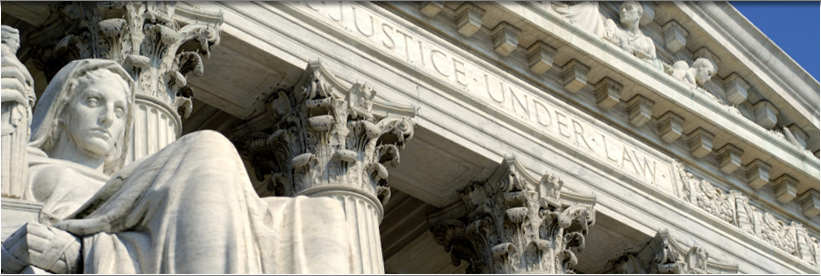Res Ipsa Loquitor, latin for “the thing speaks for itself,” is a tort principle that allows plaintiffs to meet their burden of proof with what is, in effect, circumstantial evidence. The plaintiff can create a rebuttable presumption of negligence on the part of the defendant by proving that the harm would not ordinarily have occurred without negligence, that the object that caused the harm was under the defendant’s control, and that there are no other plausible explanations. In the vast majority of tort cases, a plaintiff must prove exactly what was negligent about the defendant’s conduct.
In a few increasingly rare situations the doctrine of res ipsa loquitor shifts the requirement to the defendant to demonstrate that she or he acted properly. As indicated above, certain events are said to “speak for themselves.” For example, if a brand new chair collapses when an individual sits upon it, one might argue that the thing speaks for itself. A brand new chair should not collapse absent some negligence on the part of the manufacturer.
The Anglo-American legal doctrine of res ipsa loquitur arose from an 1863 English case in which a pedestrian was hit by a barrel of flour falling from the upper floors of a warehouse that was solely occupied by the defendant. In that case, the plaintiff was not able to present evidence of exactly how the defendant was negligent, as the plaintiff was not present in the upper floors of the warehouse at the time of the accident. Despite being unable to meet the traditional burden of proof, the plaintiff won his lawsuit under a presumption of negligence, because the defendant could not provide an explanation for the event (Byrne v. Boadle).
The present day U.S. courts are reluctant allow a plaintiff to shift his own burden of proof onto the defendant, that is, requiring the defendant to prove he acted properly. Legal scholar Brad Reid, Senior Scholar, Dean Institute for Corporate Governance and Integrity, Lipscomb University, cited the following fifteen examples, randomly selected from over one hundred 2015 U.S. court decisions, in which the plaintiff was unable to successfully assert res ipsa loquitur, meaning that these events did not “speak for themselves.” Here, the plaintiffs were required to prove the defendant’s negligence:
. Livestock on the highway were hit by a car.
. A mis-leveled elevator caused a fall.
. A patient with a fractured pelvis was improperly diagnosed.
. A newly installed HVAC system caught on fire.
. A city sewer system overflowed into a home after a two-day rainstorm.
. Airborne chemicals came from installed spray-foam insulation.
. Four foreign objects were left in a patient’s abdomen during a 1999 surgery.
. Fireworks mortar shells launched at a July 3 celebration injured the audience.
. A jail trustee was injured in an explosion while attempting to relight a gas-fired furnace.
. A house fire was caused when a squirrel was in an electrical transformer on a power pole.
. A conscious patient saw a drainage tube removed; however, part of the tube remained in his body.
. A newspaper delivery man was injured when a step collapsed at an apartment complex.
. A patient asserted improper post-surgery care.
. Air bags failed to deploy in an automobile accident.
. A tree stand collapsed when the ratchet straps failed.
Courts appear to be more and more hesitant to allow a case to go to a jury when res ipsa loquitur is the basis for liability. This development may be in part due to current legislation, particularly in the area of medical malpractice, which limits the grounds for recovery. It may also be due to the progress and development made in science and technology which now allow plaintiffs’ to actually prove defendants’ negligence. For example, in the case of a wine glass shattering in the hands of a proprietor, the plaintiff was able to hire an expert who proved through research and testing that the glass was defective. One hundred years ago, an exploding glass would have likely fallen under the doctrine of res ipsa loquitor, as the plaintiff would have been unable to prove exactly how the manufacturer was negligent or why the glass exploded.
Mr. Reid noted that courts frequently make the following type statements before denying res ipsa loquitur:
. The instrumentality producing the injury was not solely and exclusively under the control of the defendant.
. The only reasonable hypothesis for the product’s failure must be a defect due to a breach of duty or omission by the defendant.
. Res ipsa loquitur is a rule of circumstantial evidence grounded in probability and sound procedural policy.
. Res ipsa loquitur is inapplicable if the accident might have occurred without the defendant’s negligence.
. The injury must not have been caused or contributed to by any voluntary act on the part of the plaintiff.
. The connection between negligence and injury may not be based upon speculation or conjecture.
. All parties who could have caused the injury must be joined as defendants.
This post provides a short educational explanation about a complex legal topic and is not intended to be legal advice. If you have been injured due to the negligence of another, consult the Law Offices of Stuart L. Plotnick today for a free consultation.
Source: Brad Reid, Senior Scholar, Dean Institute for Corporate Governance and Integrity, Lipscomb University, Huffington Post, May 27, 2015.
